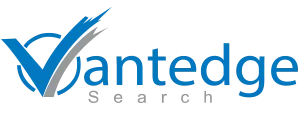
HR and Social Media: Beyond Recruiting – A Comprehensive Guide for Human Resources Management
For HR professionals, the most obvious application of social media has been in the realm of talent acquisition. In fact, 55% of job hunters agree that social and professional networks are their preferred means for a job search, highlighting the pivotal role of social media in HR strategies.
However, the utility of social media in human resources management extends far beyond recruiting, offering substantial benefits in enhancing employee performance and unlocking workforce potential. Through engaging employee interactions and supporting employee training and development, social media platforms have revolutionized how HR professionals engage with the workforce. Thanks to social media, conversations within organizations have transformed, pushing the HR function to evolve from merely managing spreadsheets of employee data to truly understanding the workforce’s pulse and tuning into the employee psyche.
Enabled by social media for HR professionals, Human Resources managers are now equipped to foster an engaging two-way dialogue between the organization and its employees, contributing significantly to employee training and development. This transformative approach sees social media as a cornerstone in supporting the multifaceted aspects of the HR function, from building a brand on social media to leveraging social media for learning and development. Here are some of the ways we observe social media bolstering the diverse components of the HR domain.
Building an organizational culture
Content shared by employees, or peers, is re-shared more frequently than content shared by top-down channels. Social media can be a great channel for defining and communicating the organization’s brand and culture through videos, stories, and images that get shared, liked, and downloaded by employees (with tools like Workplace, Yammer and Slack). Employees can also be enlisted as brand ambassadors to share these stories and rally peers around core values. The expected result would be a workforce that lives the culture you are building, social media can get people talking and sharing internally. Social channels also provide a useful forum for collaboration, problem-solving, and for soliciting employee feedback.
Engaging employees
We all understand that employees feel more connected with an employer if they feel informed, have a way to share their opinions, and a forum for problem resolution. Social media helps build that engagement with employees irrespective of their location. For instance, line managers or key HR members can post news of team achievements or awards that employees can share or retweet. Hashtags can be created to boost participation in CSR initiatives, and even weather and health advisories can be shared to get employees talking.
This helps build the visibility and credibility of HR as a function, while HR heads get an idea of how an organization is perceived by its employees and potential recruits.
Reinforcing training and development
The success of corporate training programs depends a lot on collaboration and sociability among participants. Social media supports learning and development before, during, and after a training program has been delivered. Trainers/ HR managers can build excitement for an upcoming training session on an internal social network and/or LinkedIn. Platforms like Meerkat and Periscope support engagement through live video feeds, while internal and other social channels like Twitter can be used to share content and learnings once the training is over.
Brand reputation management
HR teams can also use social media to build and manage the reputation of the organization. Employees don’t want to work for a brand with a bad reputation, and many job seekers will turn down a job offer from an organization that’s perceived negatively. That’s why the HR team has to actively monitor social media for mentions and feedback from employees, and ensure that their positive reputation is maintained by responding to negative mentions. Salesforce uses Facebook and LinkedIn to stay connected with potential hires between the recruiting cycle and their first day of work after graduation. Marriott and Naboit both feature exciting testimonials from employees on their Instagram page, while L’oreal posts enviable photos of its lovely office space. Microsoft goes a step further where they stream live interactions with their recruiters on Facebook, giving potential candidates a chance to connect with the brand.
Experience Seamless
Executive Hiring!
The next step is to go social
The next step: Embracing social media in human resources management
HR leaders are increasingly recognizing the power of social media as a pivotal tool for fostering connections across teams, departments, and even global offices. By uniting individuals, social media for HR professionals serves as a catalyst for collaboration on shared objectives and challenges, underpinning the essence of a connected workforce.
Moreover, social media stands as a vital channel for HR managers to communicate effectively, shaping organizational culture and keeping teams informed and engaged. It’s a dynamic platform for social media in HR to thrive, enabling a vibrant, two-way interaction that enhances transparency and inclusivity within the workplace.
In our view, transitioning towards a ‘social HR’ model is not just advantageous; it’s essential for the modern workplace. Social media in human resources management isn’t merely about leveraging technology; it’s about transforming the HR function into a more interactive, responsive, and employee-centered domain. This strategic integration of social media for learning and development and employee training and development signifies a new era where HR not only listens but actively engages and evolves in tandem with its workforce.

